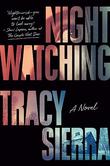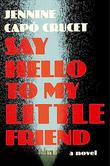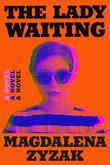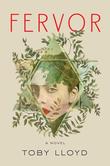
by Naima Coster ‧ RELEASE DATE: Jan. 1, 2018
Absorbing and alive, the kind of novel that swallows you whole.
Awards & Accolades
Our Verdict

GET IT
Kirkus Reviews'
Best Books Of 2018
Kirkus Prize
finalist
A quiet gut-punch of a debut, Coster’s novel is a family saga set against the landscape of gentrifying Brooklyn.
After five years away in Pittsburgh—a city whose primary appeal is its distance from Brooklyn—Penelope Grand, former artist and current bartender, reluctantly returns to Bedford-Stuyvesant to care for her ailing and beloved father, Ralph, moving into a sublet a few streets away from her childhood home. But the neighborhood has changed in her absence: her landlords, the Harpers, new to the block from the West Village, embody the shift—a young family, white, wealthy, attracted to the “historic” homes and the lower price tags. And yet the Harpers’ charming yellow house—and the affections of the charming father—offer Penelope an escape from the life she’s returned to. At least for a while. But when a postcard from her estranged mother, Mirella, shows up addressed to her from the Dominican Republic (Penelope isn’t the only one in her family desperate for escape), Penelope is forced to deal with a past she’d rather ignore. Alternating between Penelope’s perspective and Mirella’s, moving seamlessly back and forth in time, Coster pieces together the story of the Grand family: Mirella and Ralph’s early courtship and the first days of their marriage in Brooklyn, Ralph’s iconic record store and the accident that followed its closing, Penelope’s miserable freshman year at the Rhode Island School of Design, her childhood trips with Mirella to the DR, and now—in the present—their final chance at something like reconciliation. Gorgeous and painfully unsentimental, the book resists easy moralizing: everyone is wonderful and terrible, equal parts disappointed and disappointing. The plot is simple, relatively speaking, but Coster is a masterful observer of family dynamics: her characters, to a one, are wonderfully complex and consistently surprising.
Absorbing and alive, the kind of novel that swallows you whole.Pub Date: Jan. 1, 2018
ISBN: 978-1-5039-4117-5
Page Count: 332
Publisher: Little A
Review Posted Online: Aug. 5, 2017
Kirkus Reviews Issue: Aug. 15, 2018
Share your opinion of this book
More by Naima Coster
BOOK REVIEW
by Naima Coster
More About This Book

by Claire Lombardo ‧ RELEASE DATE: June 25, 2019
Characters flip between bottomless self-regard and pitiless self-loathing while, as late as the second-to-last chapter, yet...
Four Chicago sisters anchor a sharp, sly family story of feminine guile and guilt.
Newcomer Lombardo brews all seven deadly sins into a fun and brimming tale of an unapologetically bougie couple and their unruly daughters. In the opening scene, Liza Sorenson, daughter No. 3, flirts with a groomsman at her sister’s wedding. “There’s four of you?” he asked. “What’s that like?” Her retort: “It’s a vast hormonal hellscape. A marathon of instability and hair products.” Thus begins a story bristling with a particular kind of female intel. When Wendy, the oldest, sets her sights on a mate, she “made sure she left her mark throughout his house—soy milk in the fridge, box of tampons under the sink, surreptitious spritzes of her Bulgari musk on the sheets.” Turbulent Wendy is the novel’s best character, exuding a delectable bratty-ness. The parents—Marilyn, all pluck and busy optimism, and David, a genial family doctor—strike their offspring as impossibly happy. Lombardo levels this vision by interspersing chapters of the Sorenson parents’ early lean times with chapters about their daughters’ wobbly forays into adulthood. The central story unfurls over a single event-choked year, begun by Wendy, who unlatches a closed adoption and springs on her family the boy her stuffy married sister, Violet, gave away 15 years earlier. (The sisters improbably kept David and Marilyn clueless with a phony study-abroad scheme.) Into this churn, Lombardo adds cancer, infidelity, a heart attack, another unplanned pregnancy, a stillbirth, and an office crush for David. Meanwhile, youngest daughter Grace perpetrates a whopper, and “every day the lie was growing like mold, furring her judgment.” The writing here is silky, if occasionally overwrought. Still, the deft touches—a neighborhood fundraiser for a Little Free Library, a Twilight character as erotic touchstone—delight. The class calibrations are divine even as the utter apolitical whiteness of the Sorenson world becomes hard to fathom.
Characters flip between bottomless self-regard and pitiless self-loathing while, as late as the second-to-last chapter, yet another pleasurable tendril of sisterly malice uncurls.Pub Date: June 25, 2019
ISBN: 978-0-385-54425-2
Page Count: 544
Publisher: Doubleday
Review Posted Online: March 3, 2019
Kirkus Reviews Issue: March 15, 2019
Share your opinion of this book
More About This Book
SEEN & HEARD

by Mark Z. Danielewski ‧ RELEASE DATE: March 6, 2000
The story's very ambiguity steadily feeds its mysteriousness and power, and Danielewski's mastery of postmodernist and...
An amazingly intricate and ambitious first novel - ten years in the making - that puts an engrossing new spin on the traditional haunted-house tale.
Texts within texts, preceded by intriguing introductory material and followed by 150 pages of appendices and related "documents" and photographs, tell the story of a mysterious old house in a Virginia suburb inhabited by esteemed photographer-filmmaker Will Navidson, his companion Karen Green (an ex-fashion model), and their young children Daisy and Chad. The record of their experiences therein is preserved in Will's film The Davidson Record - which is the subject of an unpublished manuscript left behind by a (possibly insane) old man, Frank Zampano - which falls into the possession of Johnny Truant, a drifter who has survived an abusive childhood and the perverse possessiveness of his mad mother (who is institutionalized). As Johnny reads Zampano's manuscript, he adds his own (autobiographical) annotations to the scholarly ones that already adorn and clutter the text (a trick perhaps influenced by David Foster Wallace's Infinite Jest) - and begins experiencing panic attacks and episodes of disorientation that echo with ominous precision the content of Davidson's film (their house's interior proves, "impossibly," to be larger than its exterior; previously unnoticed doors and corridors extend inward inexplicably, and swallow up or traumatize all who dare to "explore" their recesses). Danielewski skillfully manipulates the reader's expectations and fears, employing ingeniously skewed typography, and throwing out hints that the house's apparent malevolence may be related to the history of the Jamestown colony, or to Davidson's Pulitzer Prize-winning photograph of a dying Vietnamese child stalked by a waiting vulture. Or, as "some critics [have suggested,] the house's mutations reflect the psychology of anyone who enters it."
The story's very ambiguity steadily feeds its mysteriousness and power, and Danielewski's mastery of postmodernist and cinema-derived rhetoric up the ante continuously, and stunningly. One of the most impressive excursions into the supernatural in many a year.Pub Date: March 6, 2000
ISBN: 0-375-70376-4
Page Count: 704
Publisher: Pantheon
Review Posted Online: May 19, 2010
Kirkus Reviews Issue: Feb. 1, 2000
Share your opinion of this book
More by Mark Z. Danielewski
BOOK REVIEW
BOOK REVIEW
BOOK REVIEW
© Copyright 2024 Kirkus Media LLC. All Rights Reserved.
Hey there, book lover.
We’re glad you found a book that interests you!
We can’t wait for you to join Kirkus!
It’s free and takes less than 10 seconds!
Already have an account? Log in.
OR
Trouble signing in? Retrieve credentials.
Welcome Back!
OR
Trouble signing in? Retrieve credentials.
Don’t fret. We’ll find you.





